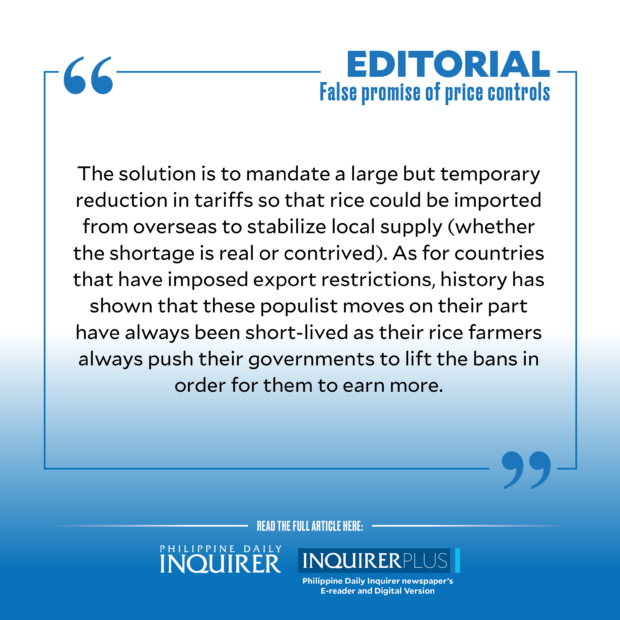False promise of price controls

“Consider the supply and demand for gasoline. Because of a war or revolution, a drastic cut in oil supply occurs. Suppose that the oil prices rise sharply and the price of gasoline rises. Populists rise to denounce the situation. They claim that consumers are being ‘gouged’ by profiteering oil companies. Further, the rising prices threaten to ignite an inflationary spiral in the cost of living. Such are the arguments of price-control advocates everywhere.
“Suppose that the government passes a law setting the maximum price for gasoline at the old level. At the legal ceiling price, supply and demand do not match. Consumers want much more gasoline than producers are willing to supply at the [lower] going price. This gap is so large that before long the pumps run dry. Somebody will have to go without the desired gasoline. If, on the other hand, the free market were allowed to operate, the market would clear with a [higher] price; consumers would grumble but would willingly pay the higher price rather than go without fuel. But the market cannot clear because it is against the law for producers to charge a higher price.
Article continues after this advertisement“There follows a period of frustration and shortage—a game of musical cars in which somebody is left without gasoline when the pump runs dry. The inadequate supply of gasoline must somehow be rationed. At first, this may be done by ‘first come, first served,’ with or without limiting sales to each customer. Lines form, and much time has to be spent foraging for fuel.”
The authors may have well been talking about the rice situation in the Philippines today in the wake of President Marcos’ executive order capping the prices of rice at P41 per kilo for regular-milled rice and P45 per kilo for its well-milled rice—well below their market prices before the government-mandated ceilings came into effect yesterday.
The President’s desire to ensure affordable rice for the Filipino people—especially in an environment where inflation remains stubbornly high despite the progress made in recent months—is laudable. But, by imposing a price cap on the staple food of the country, he is going about it the wrong way.
Article continues after this advertisementPrice controls cap official prices but tend to constrict supply, as no one wants to sell at a loss, and usually ends up creating a black market for the commodity at even more inflated prices.
The worst part of it is that Executive Order No. 39 which mandates the price cap does not prescribe a limited period during which it will be effective, and instead says that it shall “remain in full force and effect” until the President lifts it.
Other voices in government, notably the National Economic and Development Authority and the finance secretary have expressed hopes that this is but a temporary measure, but their words sound feeble at this point in the face of a President determined to push ahead with this populist move.
What is the textbook solution to this textbook problem?
It’s not the proposed P2-billion subsidy for retailers which is a nightmare to implement and may create more problems than it solves.
The correct policy is a counterintuitive one, but it is no secret to anyone familiar with the laws of supply and demand: The solution is to mandate a large but temporary reduction in tariffs so that rice could be imported from overseas to stabilize local supply (whether the shortage is real or contrived). As for countries that have imposed export restrictions, history has shown that these populist moves on their part have always been short-lived as their rice farmers always push their governments to lift the bans in order for them to earn more.
The expectations of an influx of cheap imports will then make local hoarders release their supplies into the market in anticipation of the added supply, thus lowering prices further.
“The government must foresee that angry farmers and hoarders are a minor problem compared to the mess that the price ceilings will bring about,” said economist and former central bank chief Felipe Medalla on social media.
Mr. Marcos and his advisers should heed the wisdom of 1948 which is clearly still applicable in 2023. Almost seven decades ago, Samuelson and Nordhaus described price controls as “a very blunt instrument” that “lead to numerous distortions and subterfuges that undermine the economy’s efficiency.”
In what is now considered the bible economics, the duo warned: “Placing the entire economy under price controls to curtail a few monopolists is like poisoning the entire garden to kill a few chinch bugs.”
















